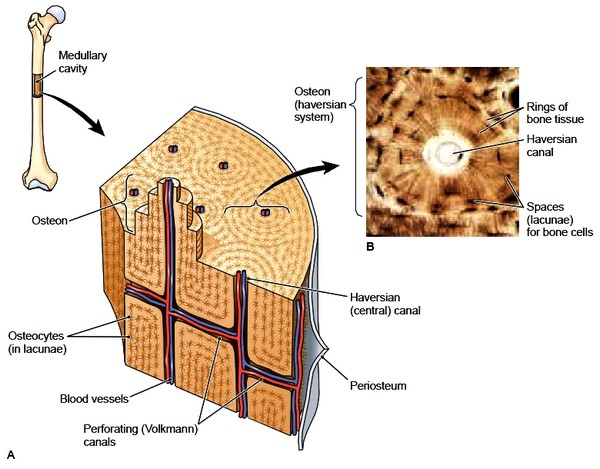Others Compact Bone Osseous Tissue

However compact bones also serve a function in storing and releasing calcium to the.
Others compact bone osseous tissue. The two different types of osseous tissue are compact bone tissue also called hard or cortical bone tissue and spongy bone tissue also called cancellous or trabecular bone. The epiphyses which are wider sections at each end of a long bone are filled with spongy bone and red marrow. Short bones are roughly cube shaped and have only a thin layer of compact bone surrounding a spongy interior. Bone tissue osseous tissue differs greatly from other tissues in the body.
While compact bone appears at first glance to be solid and uninterrupted closer inspections reveals that the osseous tissue only makes up from 70 95 of the available volume. Cortical bone and cancellous bone. Compact bone also called cortical bone is one of two types of bone connective tissue the other being spongy bone also called trabecular bone. The remainder is cancellous bone which has a spongelike appearance with numerous large spaces and is found in the.
The medullary cavity has a delicate membranous lining called the endosteum. Bones are more complex on the inside than you would expect from their outer appearance. Except at its edge the osseous tissue of compact bone is arranged in cylindrical osteons. Bone is hard and many of its functions depend on that characteristic hardness.
The epiphyseal plate a layer of hyaline cartilage is replaced by osseous tissue as the organ grows in length. There are pores and spaces even in compact bone. Each osteon is a compact. Compact bone also called cortical bone dense bone in which the bony matrix is solidly filled with organic ground substance and inorganic salts leaving only tiny spaces lacunae that contain the osteocytes or bone cells compact bone makes up 80 percent of the human skeleton.
Compact bone forms a protective shell around. Spongy bone is used for more active functions of the bones including blood cell production and ion exchange. Due to the strong nature of compact bone compared to spongy bone it is the preferred tissue for strength. The bones of the wrist and ankle are short bones.
The walls of the diaphysis are compact bone. Later discussions in this chapter will show that bone is also dynamic in that its shape adjusts to accommodate stresses.


















